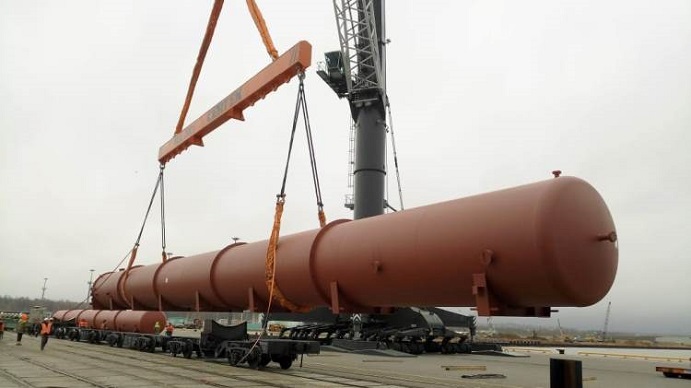
JSC “Russian Railways Logistics” organized a series of domestic Russian shipments of autoclaves for a major domestic manufacturer of concrete products - Silikat LLC, which were transported for five months: from November 2018 to March 2019.
- Transportation of oversized equipment is always a particularly time-consuming and multi-step process that requires careful preliminary study. At the same time, the recipient invariably waits for his cargo in a short time, and, accordingly, our task is to carry out all the preparatory work as quickly as possible, including developing and coordinating an individual fastening scheme, ”explained Eduard Alyrzaev, First Deputy Director General of Russian Railways.
Five units of oversized equipment were transported from the port of Bronk to the Novospasskoye station of the Kuibyshev Railways. Within the framework of the transportation process, RZD Logistics was responsible for the development and coordination of drawings, loading and fastening, customs clearance and intra-port forwarding, as well as route coordination, the provision of railway transporters and payment of freight charges.
After arriving in Bronka, the autoclaves were overloaded with a powerful Liebherr LHM 800 mobile harbor crane on railway rolling stock. The cargo was fixed in advance designed and manufactured metal supports and belts.
We transported autoclaves weighing 83 tons on multi-axle conveyors of the coupling type, which are considered rare railway rolling stock. The conveyor itself has a length of 50 meters and consists of four special wagons: two extreme load-carrying platforms, equipped with turning turnstiles, and two intermediate reinforced platforms, which do not accept the weight of the load. Thus, the autoclave relies only on two “pedestals” between which there is 35 meters of empty space. Figuratively speaking, the load is “hung out” between two supports.
